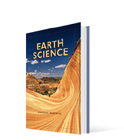 Earth Science Webquest Internet Investigations Links
Earth Science Webquest Internet Investigations Links
![]()
Internet Investigation
for
ES1706:
How Does the Temperature at One Location Change over a Year? (Do this first!)
ES2101:
What Factors Control Your Local Climate?
Internet Investigation
for
ES2708: What Processes Shape Planetary Surfaces?
ES2704:
How Fast Does the Wind Blow on Jupiter?
Internet Investigation
for Wednesday/Thursday, April 12/13, 2006
ESU701:
Could Mars Support Life?
Google Mars: Check out Mars!
Google Moon: Check out the Moon!
Internet Investigation
for
ES2605:
How Does the Sunspot Cycle Affect Earth? Do
this first!
ES2603:
Why Does the Size of the Sun Appear to Change?
Spaceweather: Go here for a
current picture of the sun.
Solar
Minimum Has Arrived: This story explains why the sun is so inactive right
now.
Solar Cycles:
Go here for a story concerning solar cycles and why the sun’s activity
changes.
Solar
Cycles Again: Go here for a similar story about solar cycles.
Solar
Storm Warning: Go here to find out why the next solar maximum could produce
many sunspots and solar flares.
Internet Investigation
for
ES2506:
What if Earth and the Moon Were Hit by Twin Asteroids? Do this Internet
Investigation front and back.
ES2507:
Learn More about Impact Craters on Planets and Moons
Comets versus Asteroids versus Meteoroids: Go to these
websites to find out what the difference between asteroids and meteoroids is.
Write this down on a separate sheet of paper telling me what the difference is.
Go here
to see a comet’s passage through the solar system. Go here
to see an animation of meteor showers.
Internet Investigation
for
Earth Science &
Geology
ES1001:
How Are Earthquakes Related to Plate Tectonics?
ES1102:
How Do Rocks Respond to Stress?
Extra Credit
Tell me about a historical
earthquake greater than magnitude 6.5. Tell me when it occurred, what kind
of damage it caused, how many people were killed, where it occurred, it’s
magnitude, the depth of the focus, how far away it was felt, if it is near a
plate boundary, what kind of fault caused it (normal, reverse, strike slip) and
how many aftershocks it had.
Geology
ES1106:
What Forces Created These Geologic Features? You might need to finish this for
homework?
Internet Investigation
for
Geology
Predicting Volcanic
Eruptions: USGS website
for forecasting volcanic eruptions
USGS Volcano Hazards Website: Go here to find out more about what is
being done to predict volcanic eruptions.
National
Geographic: Go here for
more background on volcanoes.
Earth Science
Eruption
Data: Go here to find eruption data
More eruption data: Go here to
find more eruption data at Volcano World
ES0901:
How are volcanoes related to plate tectonics?
This Dynamic Planet: Go here to access a map that tells what
direction the plates are moving and where the boundaries are.
National
Geographic: Go here for
more background on volcanoes.
Internet Investigation
for
ES0802:
How Old Is The
ES0810:
How Fast Do Plates Move?
This Dynamic Planet: Go here to access a map that tells what
direction the plates are moving and where the boundaries are.
Internet Investigation
for Homework on
ES0602: How Do Rocks Undergo Change?
ES0603: How Do Igneous Rocks Form?
Internet Investigation
for
Do this: ES0103:
How are Earth’s Spheres Interacting? Answer the questions in blue. Be
aware that some of the pages do not have questions.
![]()